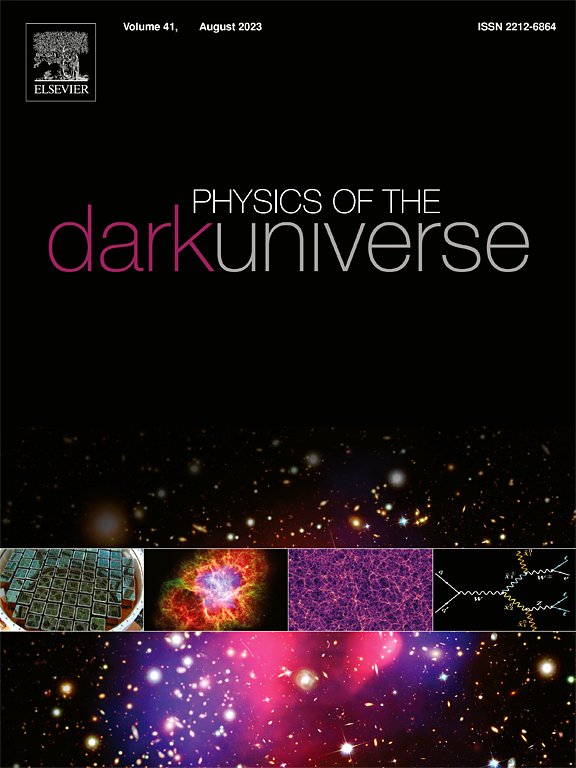粒子轨道上的磁荷印记,弱引力透镜和黑洞阴影
IF 6.4
2区 物理与天体物理
Q1 ASTRONOMY & ASTROPHYSICS
引用次数: 0
摘要
我们提出了一个具有独特的物理性质和动力学演化的磁性带电黑洞溶液的综合分析。通过研究测试粒子轨道,我们得到了能量、角动量、最内层稳定圆轨道半径、光子球和李亚普诺夫指数等关键量。这包括真空和等离子体介质中的弱引力透镜现象的研究,重点是在SIS和NSIS剖面下的均匀等离子体分布。此外,研究了黑洞图像的放大,并通过光学几何方案中的Gibbons-Werner方法交叉验证了偏转角公式。我们解的一个关键特征是电荷参数q和耦合常数μ,这使我们的解区别于经典的史瓦西黑洞。我们还研究了磁荷黑洞的阴影,重点讨论了磁荷q和耦合常数μ的影响。发现阴影的形状和大小都与史瓦西情况有很大的不同。q和μ的值越高,偏差越大。因此,对黑洞阴影的观测发现提供了可探测的磁荷迹象。最后,我们通过分析李亚普诺夫因子来研究新磁化黑洞的稳定性。我们的结果为非平凡电磁和耦合结构对黑洞度量的影响提供了新的几何解释,以及它们对天体物理观测和替代引力理论测试的影响。本文章由计算机程序翻译,如有差异,请以英文原文为准。
Imprints of magnetic charge on the particle orbits, weak gravitational lensing and black hole shadows
We present a comprehensive analysis of a magnetically charged black hole solution featuring its distinctive physical properties and dynamical evolution. By investigating test particle orbits, we derive crucial quantities like the energy, angular momentum, innermost stable circular orbit radius, photon sphere, and Lyapunov exponent. This encompasses research into weak gravitational lensing phenomena in vacuum and plasma medium, focusing on the uniform plasma distribution under SIS and NSIS profiles. Additionally, the amplification of black hole images is studied, with a cross-verification of the deflection angle formula via the Gibbons-Werner method in the optical geometry scheme. A critical feature of our solution is the charge parameter and coupling constant , and distinguishes this solution from the classical Schwarzschild black hole. We also study the shadow of a magnetically charged black hole, with an emphasis on the impact of the magnetic charge and the coupling constant . Both the shape and the size of the shadow are found to differ significantly from the Schwarzschild case. The higher values of and produce larger deviations. Observations of black hole shadows are thus found to provide detectable indications of magnetic charge. Lastly, we study the stability of a newly magnetically charged black hole by analyzing the Lyapunov factor. Our results provide novel geometrical interpretations for the effect of non-trivial electromagnetic and coupling structures on black hole metrics, as well as their consequences for astrophysical observations and the testing of alternative theories of gravity.
求助全文
通过发布文献求助,成功后即可免费获取论文全文。
去求助
来源期刊

Physics of the Dark Universe
ASTRONOMY & ASTROPHYSICS-
CiteScore
9.60
自引率
7.30%
发文量
118
审稿时长
61 days
期刊介绍:
Physics of the Dark Universe is an innovative online-only journal that offers rapid publication of peer-reviewed, original research articles considered of high scientific impact.
The journal is focused on the understanding of Dark Matter, Dark Energy, Early Universe, gravitational waves and neutrinos, covering all theoretical, experimental and phenomenological aspects.
 求助内容:
求助内容: 应助结果提醒方式:
应助结果提醒方式:


